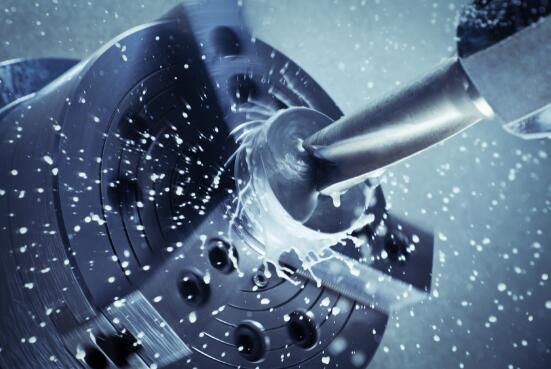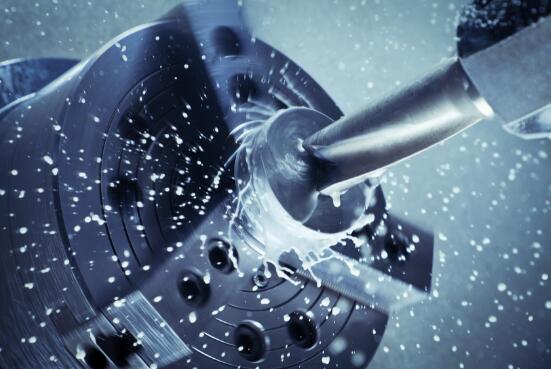In machining, the machining precision of parts directly affects the quality of mechanical products. This article takes the machining process of parts as an example, introduces the machining technology process, discusses the optimization plan to improve machining accuracy, and analyzes the causes of machining errors.

0. Introduction
The machining process is the use of machining methods to alter the blank to gradually meet part production standards. The machining process changes the blank, including shape changes, blank size changes, etc. The machining process, as the basis of parts processing technology and parts processing precision, has a great impact; The more accurate the machining process is, the higher the precision of parts processing and the greater the compliance of parts processing with parts production standards.
In the machining process, the machining precision caused by the production of machined parts leads to large losses for various reasons. Therefore, when using machining technology to produce parts, the influence of external and internal factors on the accuracy of the machining process of parts, a precise and in-depth understanding of the machining process is required, so that the machining process is more perfect and targeted , and parts are machined with greater precision. This article takes the machining process of parts as an example, presents the flow of the machining process, discusses the optimization of machining accuracy, and analyzes the causes of machining errors.
1. Editing the process flow
The machining process refers to the production and processing stages of parts or parts, using machining methods to change the blank so that the blank gradually meets the production standards of the parts. The machining process changes the blank, including changes to the shape and size of the blank. The more general machining process mainly includes roughing to finishing, from finishing to assembly, final inspection assembly, and finally testing of qualified parts or parts for packaging.
The machining process aims to transform the raw part into a qualified product of the process; This process consists of part processing and part processing steps, specific processing processes and processing steps in the corresponding specific standards and requirements. These steps and processes in the specific machining standards and requirements are the machining process.
For example, in rough part machining, the raw parts in the rough machining process must have roughness, process and other data details and specifications. The machining process is the process file generated by parts machining companies in the technology selection process. Parts processing companies are not selected blindly in the selection process, but according to the production of companies to determine the production of companies, including the quality of the company's machining personnel and the condition of parts processing equipment.
Enterprises need to fully understand their conditions and select process technology and operation methods based on the actual situation. This process must be written in the process documentation. Parts processing companies created through the approval of process documents will be guided in parts processing production. The general regulations of the machining process include the part processing process route, the specific content of the processing process, processing equipment, etc. In the parts processing process, the process is the production route, parts processing production instructions regulations and processing technology determine the precision in parts production.
2. Machining process factors that affect the machining accuracy of parts
The precision factors of part machining technology can be divided into intrinsic and extrinsic factors. The geometric accuracy of the machining system is the intrinsic factor of the machining accuracy of the part in the machining process.
2.1 The causes of intrinsic factors that affect the machining accuracy of parts
The precision of the machining process itself is an essential factor of the machining process for the machining precision of parts. The precision of the machining process itself is mainly influenced by three factors:
- 1) Due to the machining process in the factory, during the manufacturing process, there will be accuracy problems in the machining process itself, so the accuracy of the machined parts will be affected when put into operation.
- 2) The editing system is installed during installation and use. Due to the differences between the installation standards and the mechanical system, it does not work properly and the positioning is inaccurate, causing the accuracy of the parts to be affected in the machining process.
- 3) Problems in using the mechanical processing technology system. Due to the long-term use of some parts of the mechanical processing technology system, severe wear will occur, which will affect the processing accuracy of parts of the mechanical processing technology system. For example, in the factory, machine tools, cutting tools and accessories have certain errors in components or process installation and use. The installation must be done correctly, the operation must be better and the positioning must be more precise.
2.2 Deformation of the machining process in electrical operation
(1) Analysis of factors causing force deformation during system operation
In the actual operation of the machining process, force deformation often occurs in the system, causing slight deformation of the position and shape, which significantly affects the normal operation of the system and the service life of the reducer. When examining the causes, it was discovered that they were mainly due to two factors:
- 1) The actual operational intensity of the system. In the actual operation of the system in the process, the tools, accessories and other small components used in the system must withstand high labor intensity and are prone to changing their relative position or deforming due to force over a long period of time.
- 2) Components are subject to multiple forces. During the operation of the system, the system components must not only support the work of the system itself, but also withstand the relative strength of the processing parts and at the same time withstand the friction between the parts and components.
(2) Machining process operation in thermal deformation process
The machining system is not only exposed to various forces during the operating process, but is also influenced by other factors. In particular, thermal deformation, including the thermal deformation of the tool, the thermal deformation of machined parts, the machine tool itself and its components caused by thermal deformation. Thermal deformation refers to the deformation of the system due to heat. This can seriously affect the precise geometric relationship between the tool and the machined parts, as well as the relationship between the movement, which seriously affects the accuracy of the machined parts.
3. Optimization scheme to improve machining process accuracy
In summary, the machining process technology has a direct impact on the machining accuracy of parts, and the accuracy of the mechanical system itself is the main factor that affects the processing accuracy of parts. Therefore, when processing parts, firstly, mechanical system problems should be avoided, and secondly, processing due to deformation caused by force. This paper proposes two optimization schemes: one is to use surface finishing processing technology and the other is to use special processing technology.
3.1 Surface technology in the machining process
Surface processing technology is one of the processing technology methods. This method allows machined parts to reach specified geometric dimensions and obtain the ideal surface finish. After the parts are surface processed, the surface grade and structure are significantly improved. The technology consists of processing the surface of parts by grinding, collision, lamination and extrusion. The aim is to increase the surface area of the metamorphic layer and, at the same time, improve wear resistance. In addition, burrs, sharp edges, sharp edges, etc. are removed from the surface of the parts. In surface processing technology, the entire surface of the parts is processed in a single process. It may be the original old technology, removing and optimizing processes such as grinding, fine grinding, belt polishing, kava felt polishing, etc.
3.2 Special processing advances in machining technology
According to the characteristics of modern manufacturing industry, special processing should be introduced, especially for processing materials with high hardness, high toughness, high strength and high brittleness and other difficult-to-cut materials, suitable for processing small holes and complex shapes, a Special structure of the parts can be used. Therefore, special processing has good application prospects in the future machining process. The working principle of this method is to use chemical energy, electrical energy, acoustic energy, mechanical energy, as well as light energy and thermal energy in the processing of metals or non-metallic materials. This is characterized by no contact or only indirect contact between the processing tool and the parts, less thermal deformation and deformation force during processing, and the processing accuracy of the parts is further improved.

























































